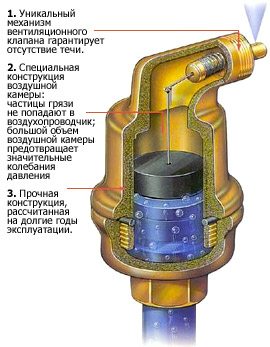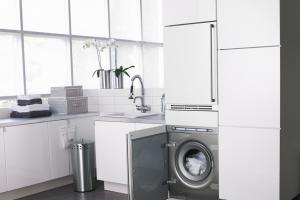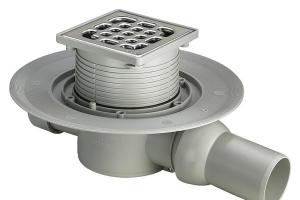How to bleed air from the heating radiator of the central and autonomous system
In this article, we will try to figure out how to bleed air from a heating radiator with different configurations of the heating circuit. We will study solutions for apartments in apartment buildings and for cottages with water heating. So let's get started.
Why is it needed
A typical heating system operates with a minimum pressure difference between supply and return. Usually the difference is only 2 - 3 meters (0.2-0.3 kgf / cm2); when this value is exceeded, the increased circulation speed of the coolant generates hydraulic noise.
The downside of a small drop is the sensitivity of the circuit to air pockets. With a difference of 2 meters, an air riser or a whole circuit simply cannot work: the pressure of the coolant is not enough to push through the air, overcoming the difference in density between it and water.
However: systems with forced circulation and a simple circuit structure (without multiple twin risers) are quite capable of operating partially aerated.
The pump creates a significant pressure with limited performance, eliminating the appearance of noise.
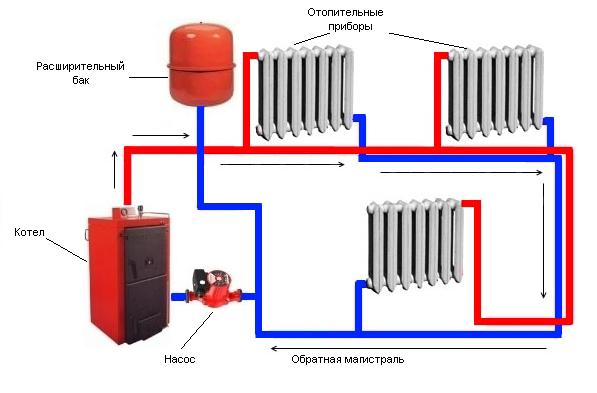
A special case
When the radiators are located above the fillings and the connection scheme is "bottom down", the air will be forced out in the section; in this case, the coolant will circulate through the lower collectors of the heating devices. The presence of air pockets will not interfere with the performance of the circuit, but will somewhat reduce the heat transfer of the batteries.
Central heating
The reset heating system of an apartment building is started as follows:
- The reset to the circuit opens.
- Slowly (to avoid water hammer) the valve or valve on the supply line opens. In this case, a significant part of the air is expelled from the circuit.
- After water without air bubbles flows into the discharge, the discharge is blocked, and the valve or valve is not transferred to the open state.
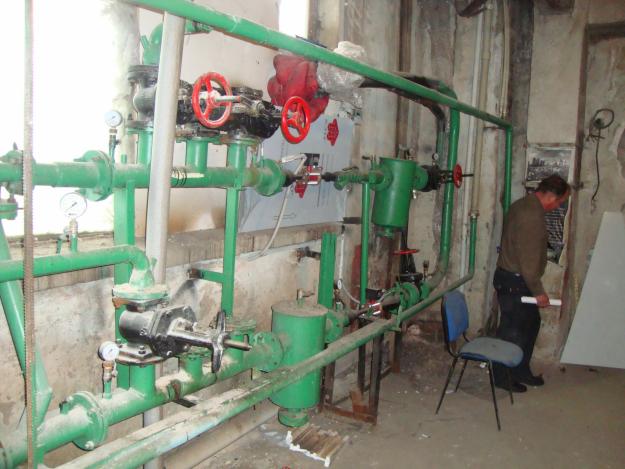
- In houses with top filling (the supply is located in the attic or in apartments on the top floor), air is bled from the expansion tank.
In the houses of the lower bottling (supply and return in the basement), part of the risers will inevitably turn out to be airy. To bleed the air, you need to get access to Mayevsky's taps. They are always located at the highest point of each pair of heating risers.
Possible options for placing cranes:
- In the plug of the end section of the radiator on the top floor;
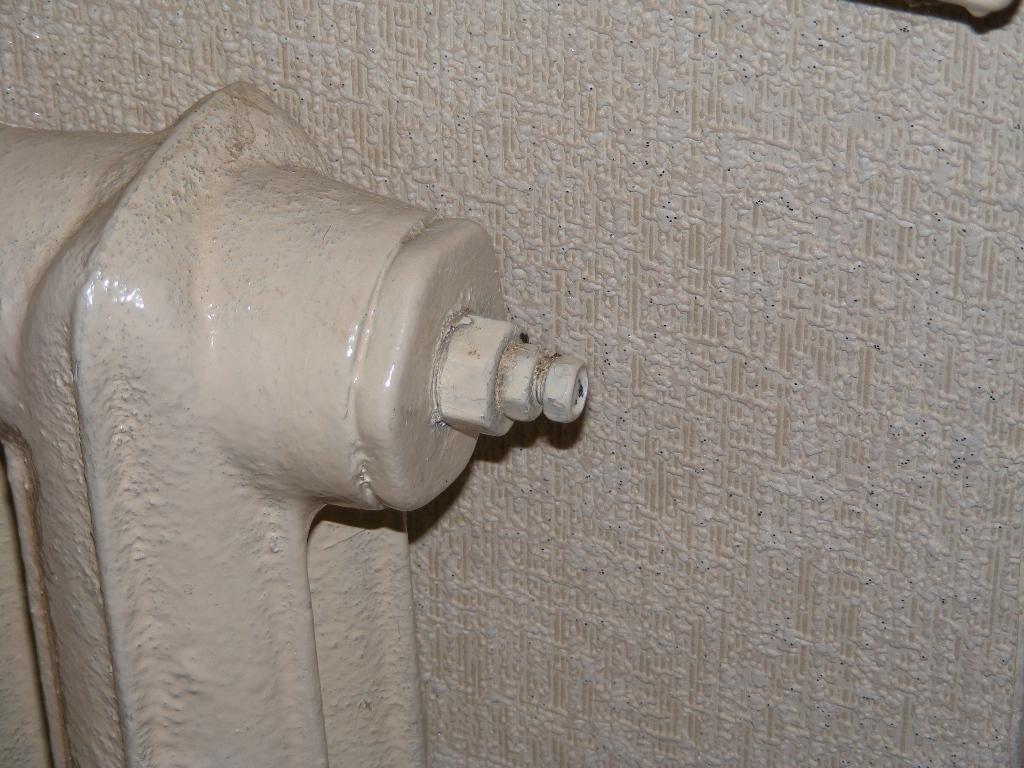
In the photo - a Mayevsky crane in the end section of a cast-iron battery.
- In a jumper under the ceiling of the upper floor connecting radiators in neighboring rooms or apartments;
- In the jumper placed in the attic.
Please note that the last scenario is the most unfavorable.
In the absence of circulation in severe frosts, the jumper freezes in half an hour or an hour, and thermal insulation can only slightly increase this period.
What to do if the heating system is running, but your battery remains cold?
You don't know how to use Mayevsky's tap? Then the next section is for you.
regular procedure
Let's assume that you have gained access to the air vent. How to release air from a heating radiator with it?
The instructions are ridiculously simple:
- Loosen the valve stem one or two turns. Depending on the type of faucet, this can be done with a special key, screwdriver, pliers, and even with your own hands, without tools. At the same time, the air coming out of the batteries should hiss.
- Wait for the moment when water comes out of the tap instead of air.
- Close the faucet - carefully, without undue force.
What can not be done when bleeding air?
- Unscrew the stem completely. It is not easy to screw it in, overcoming the resistance of water; overcoming the resistance of hot water is impossible.
- Completely or partially unscrew the radiator cap. Alas, there were precedents.
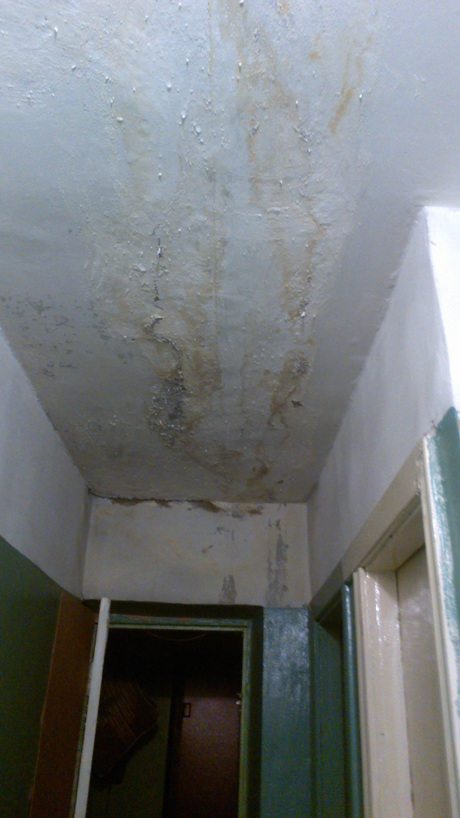
- If the faucet does not close, try to tighten it by force. You just break the stem and flood the apartment. The price of a new Mayevsky crane does not exceed 100 - 120 rubles; The emergency team of mechanics carries out replacement free of charge.
emergency procedure
If the vent is not accessible, some heating system configurations can bleed air from the basement.
Please note: this is possible in houses where plate radiators or convectors are used as heating devices, as an option - a riser with sectional radiators is paired with an idle riser.
The air lock, when bypassing the paired risers, flies out at the front of the water flow.
The procedure looks like this:
- Pair risers overlap.
- The plug on an idle riser, a riser with plates or convectors is replaced by a vent of the same diameter.
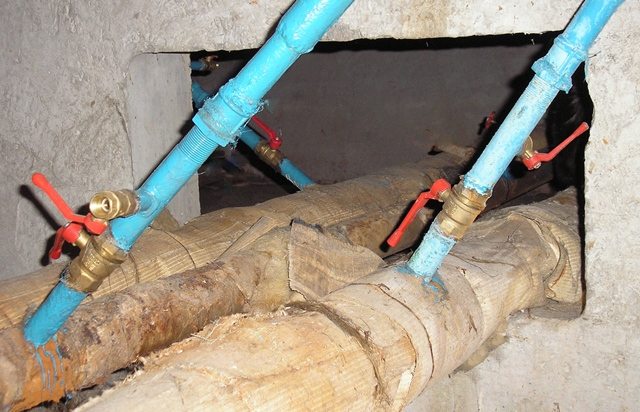
- The riser is bypassed for discharge until the air is completely out and transferred to the circulation mode.
Heating system
The use of Mayevsky cranes is no different from a similar operation in central heating systems. However, this annual procedure can be avoided.
How to bleed air from an aluminum radiator in automatic mode? This work will be done for you by an automatic air vent for the radiator. It is installed at the top of the circuit or its section and bleeds air congestion without any participation of the owner immediately after their formation.
